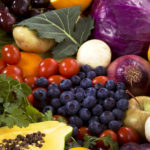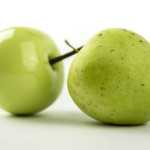By David Blyweiss, M.D., Advanced Natural Medicine
September 07, 2012
- What those annoying produce stickers can tell you
- Still no way to know a GMO
- A creative way to use PLU codes
While the debate rages on about what the public deserves to know about their food and supplements, there is a little-known way to get a clue about your produce that few people know about.
I often recommend buying organic produce, and I strongly urge people to steer clear of buying genetically-modified foods whenever possible.
But as of now, there are no laws requiring growers to inform the consumer about whether GMO seeds have been used. And while most stores are good about delineating organically-grown and conventionally-grown foods, it can still be confusing.
Today I’ll share the secret to those little produce stickers you always have to remove when you get your food home, how you can use them to make sure you know what you’re buying, and whether or not the information on them is reliable.
If there’s one thing you can count on, it’s that stores definitely want to make sure produce is accounted for properly at checkout. As you can imagine, the last thing a store wants to do is give you organically-grown food at conventionally-grown prices. Hence, the little stickers you find on every single fruit and vegetable that comes out of the grocery store.
You may not have ever thought much about them, other than the annoyance of washing them off. And that they tell the cashier whether it’s a Fuji apple or a Honeycrisp. But it turns out, they do have some useful information.
The number on the stickers is called a PLU, (Price Look-Up) but it not only distinguishes what it is, it can tell you a lot about the produce you’re buying � if you know the secret.
A four-digit code indicates conventionally-grown produce, and the code itself distinguishes what type � so a Fuji apple is 4129 and a Honeycrisp is 3283, both conventionally-grown, anywhere you buy it.
A five-digit code starting with a 9 indicates organically-grown produce. So if you’re not sure, for example, whether the produce has been shelved correctly, you can double-check the sticker on the produce itself.
The last category is the most controversial. If a number is five digits and starts with an 8, it indicates genetically-modified produce.
Aha! you might be thinking. I can finally know what I’m buying.
Are You Suffering From...
- Love handles and a pot belly
- Romance that isn't what it used to
- Forgetfulness and inattention
- Low (or no) strength and endurance
- A sex drive that's shifted into neutral...or worse
If so...you may have Mature Male Burnout. Click here to discover more about this unique condition and what you can do about it.
Well, not so fast.
With some forethought, the produce brokers realized there might be a use for this distinction one day, so they created it. But this doesn’t mean anyone uses it yet.
Most growers know the public is not inclined to choose GMO foods, if they can avoid it. And since they aren’t required to inform you by law, finding a five-digit code starting with an 8 in the supermarket is about as common as spotting a unicorn on the way there.
Of course, this information has been making the rounds of the Internet for some time, and it’s gotten twisted along the way. Which is creating a false sense of confidence among those ‘in the know’ about PLU codes. People think they are safe from GMO as long as there’s no 8 in front of the number on their produce sticker.
The unfortunate truth is that until regulations are passed, such as California’s Prop 37, which would require GMO foods to be indicated on the labels on most foods, it’s a game of Russian Roulette in the produce aisles.
But a little more information is certainly better than none.
And in the interest of encouraging you to continue to expand your repertoire of fruits and veggies, and include more and more in your diet, here’s a creative idea for how to use PLU codes, now that you know how to look them up yourself�
The International Federation of Produce Standards has a website and database online of all the PLU codes that exist. It’s not geared towards the consumer, so it isn’t at all fancy. But it is very straightforward and informative.
One fun way to use it might be in your endeavor to eat new fruits and vegetables. For example, pick up some kind of completely foreign produce and throw it in your cart. Sure, it might be marked, but you may not remember the name of it when you get home.
But, just pull up the IFPS database when you get home and plug in the number on the sticker. And voila! Now, you know its name and can look up the best ways to prepare it.
Gotta love the Internet.






